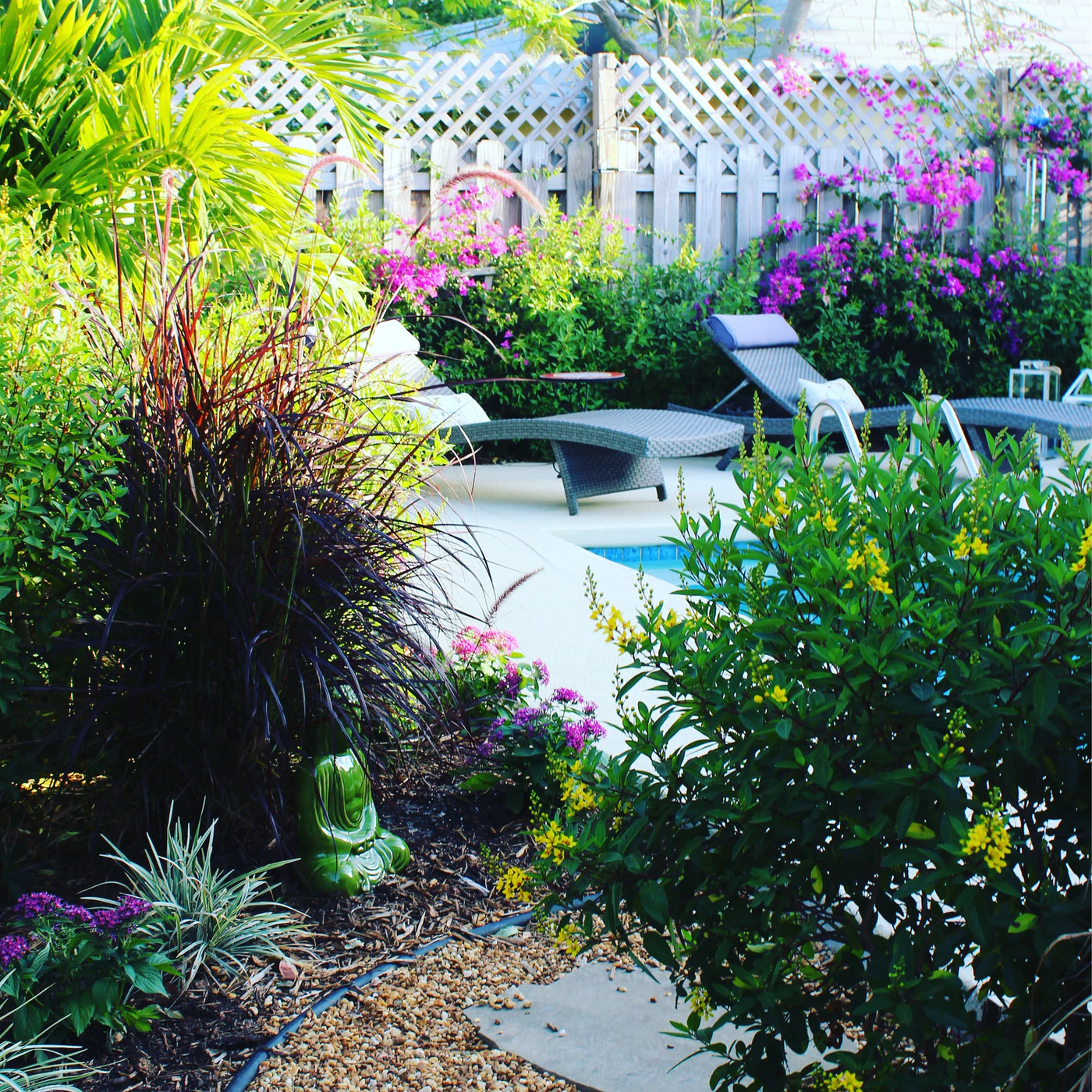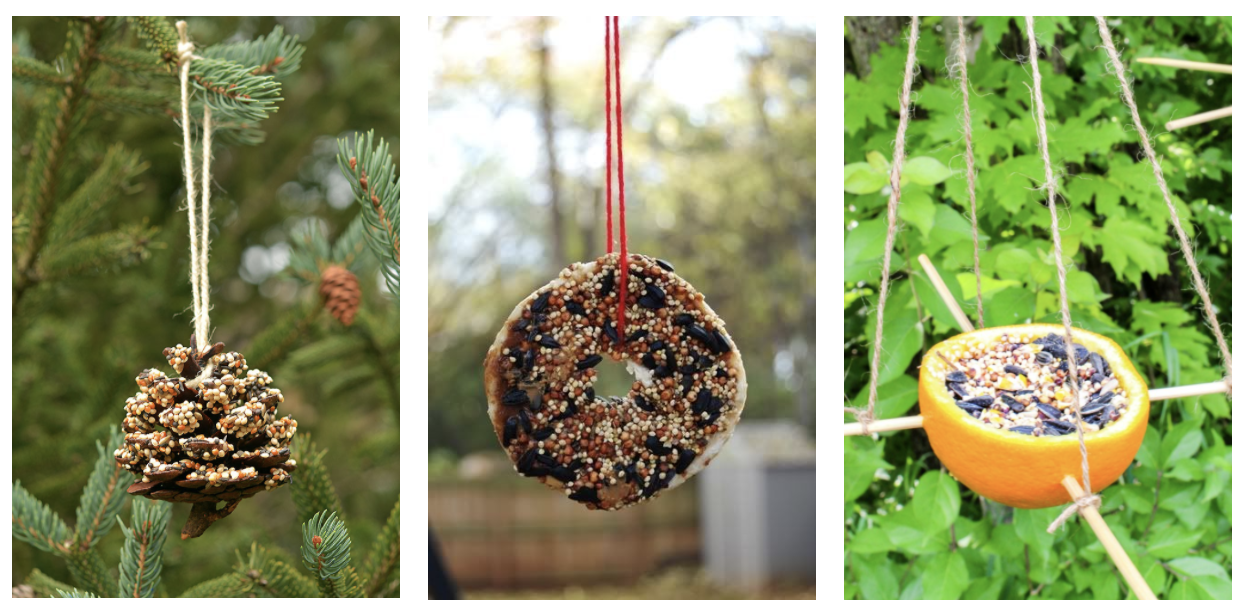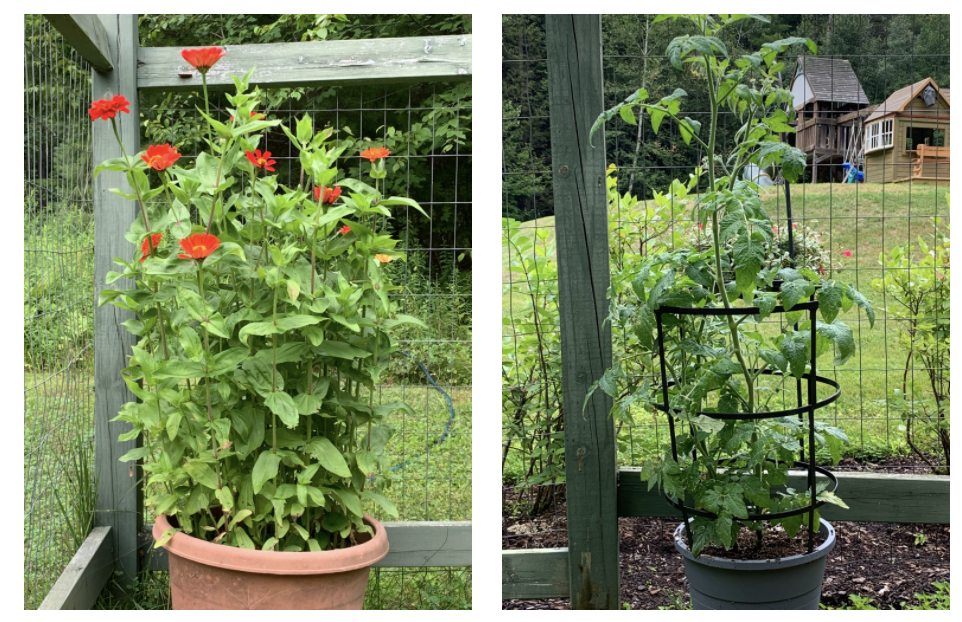At-Home Activities: Three Ways to Attract Nature to Your Home
Today we’ll provide some projects that you can do to bring more plants and animals to your home. Even if you live in an urban area, you can still do everything listed. Check out the fun activities below.
A wildlife-friendly space gives you a chance to observe them up close. (Image credit: Jennifer Marcus)
Make a Bird Feeder
If birds know there is a reliable food source around, they will likely stay in that area. By attracting birds to your home, you’ll be able to observe them up close. Birds also eat pest insects, so they provide an added benefit. Here are a few different ways to make your own bird feeder:
Pine Cone Bird Feeder
If you have pine cones near your home, grab a few and tie strings to the top of them.
Then use a butter knife to spread peanut butter or cooking fat all over the pinecone surface.
Afterwards, roll the pine cone through a bowl of birdseed and hang from a high surface like a tree or porch.
Watch a video of a pine cone feeder being made here.
Bagel Bird Feeder
If you have a stale bagel, this is the perfect reason not to throw it away.
Tie a piece of ribbon or string around the bagel, using the bagel hole.
Spread peanut butter or cooking fat all over the bagel.
Roll it around in some bird seed until it’s completely covered.
Poke a dowel or skewer through the bagel if you want. This will provide a perch.
It’s now ready to hang from a tree or porch.
Watch a video of a bagel bird feeder being made here.
Orange Half Bird Feeder
Cut an orange in half and remove (eat!) the fruit and pulp, making sure not to scratch the remaining peel.
Poke four holes around the peel, close to where you cut, so that the holes are evenly spaced from each other.
Push a skewer or dowel through one set of holes and tie a piece of string on each skewer.
Do the same thing with another skewer and piece of string with the remaining two holes.
Fill the orange half with a mixture of cooking fat or peanut butter and birdseed.
Hang from a tree or porch.
Watch a video of an orange being made into a bird feeder here.
Here are some examples of what the bird feeders may look like after you’ve completed them. (Image credits from left to right: Debbie Chapman; Pinterest; Natural Beach Living)
Create a Pollinator Watering Hole
Bees and butterflies are important to have because they pollinate the food we grow, which can increase crop yields. They also help flowers grow. Many plants require cross-pollination, and pollinators help with that. After a long hard day tending to the flowers, they’ll often search for water before they return to their home. Providing them with a watering hole will be refreshing for them and will allow you to observe them up close.
Grab a shallow bowl, pan, or saucer.
In order to prevent pollinators from falling in the water, and to drive away mosquitoes that will lay eggs, some type of filler should be used. Fill the container with a filler of your choice such as marbles, small rocks, pebbles, or glass beads.
Fill the container with water, ensuring that the filler you chose has parts of it above water.
Check the container often to make sure there is enough water.
Eventually, bees and other insects will find the water source and with a little patience, you may be able to watch them drink. Check out this video to see one way a pollinator watering hole can be made.
A pollinator watering hole with glass beads for filler. Honeybees can be seen having a drink. (Image credit: Rusty Burlew / Backyard Beekeeping)
Grow Flowers or Vegetables in Outdoor Containers
In the spring and summer, many people start planting seeds. Growing plants from seed in an outdoor container can be a fun and exciting way for you to observe nature.
Flowers
If you decide to plant flowers, they’ll eventually bloom. Blooming flowers will attract bees, butterflies, and other pollinators, giving you a chance to quietly observe them. What you decide to grow will determine when you plant, where you plant (indoors or outdoors), what size container, and what type of soil you need. If you can, pick up a seed packet of your choice and with the help of an adult (and the seed packet directions), plant some seeds in a container. You can also buy a potted plant at a nursery that has already been growing for a while; that way you’ll be able to observe insects sooner.
Here are some flowering plant types that grow well in containers:
Geraniums
Chamomile
Chrysanthemums
Dahlias
Marigolds
Cosmos
Zinnias
Vegetables
Planting vegetables in a container will also provide you with a chance to observe insects. If grown properly, they will supply you with some healthy snacks to eat as well! Again, like flowers, what you decide to grow will determine many things, such as what type of soil and container size you need.
Below are some vegetables and fruits that grow well in containers:
Tomatoes
Peas
Potatoes
Squash
Lettuce
Peppers
Cucumbers
Strawberries
Read: Container Gardening 101
The left photo shows a container of blooming red Zinnias. The right photo is a tomato plant growing in a container. In a couple of weeks, it will have juicy tomatoes.
Want More Activities?
Below are some links that will provide you with more activities and craft projects that you can take part in. These are meant to connect you with the natural world. Being outside and observing nature up close is such a fun experience, and we hope you feel excited to discover what sort of wild creatures may cross your path.
10 Easy Crafts For Kids Inspired By Mother Nature - Outdoor Families Magazine
10 Backyard Nature Activities For Kids - Appalachian Mountain Club
By Megan Goldsmith




